Cold walls in old house – a winter’s tale
Cold walls in old house, can be an ongoing issue for period property owners. Thanks to how properties were constructed in years gone by it can often cause numerous issues for your home, especially if not correctly dealt with.
This article will delve into the causes of cold walls in old houses, the effects and some potential solutions.
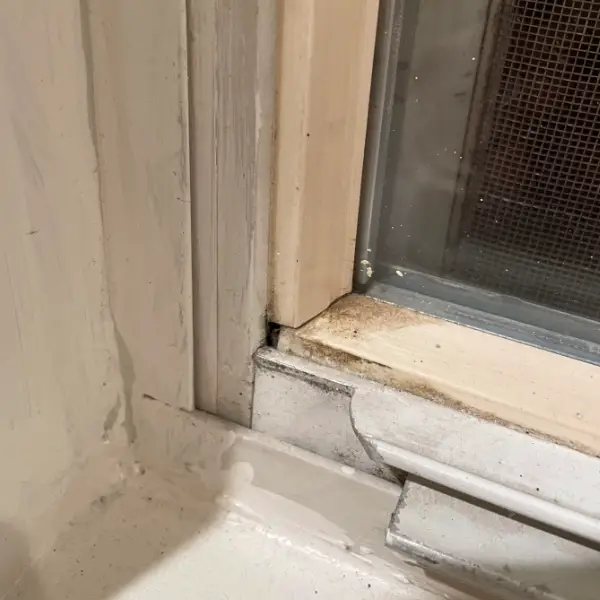
It will also compare DIY solutions with professional ones, and provide a recommendation for the best course of action.
Our aim is to ensure that you have the correct knowledge and tools to help address the issue of cold walls in your home.
Cold walls in old house – the what & why
This is a common issue in homes that were built before modern insulation and heating techniques were available.
Cold walls in old houses refer to walls that are noticeably colder to the touch than the rest of the room. Other common signs are damp and wet patches which often occur as a result of the wall being cold.
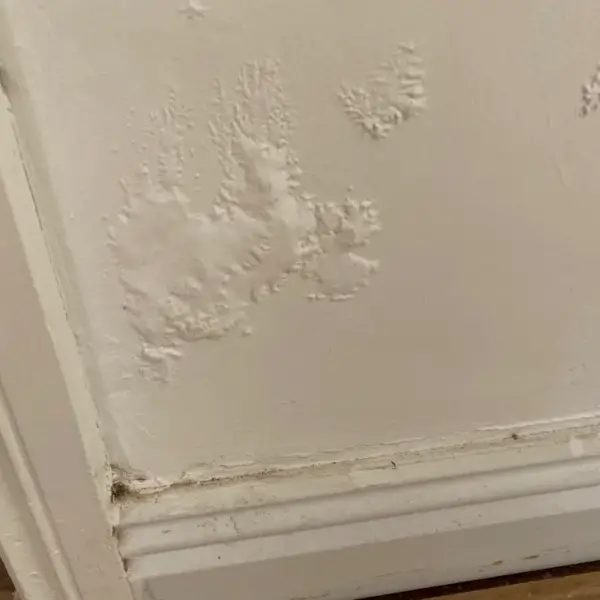
It can be a constant source of frustration for homeowners as a number of other issues can occur because of the cold walls.
Not only can cold walls cause discomfort, but they can also lead to increased energy bills, poor indoor air quality, and even health hazards.
Mould and dampness can be incredibly frustrating and in many cases are a result of cold walls.
As with any issue inside of your home, it is best to face it head-on. By going through this guide you will be able to ensure a warm, comfortable, and safe living environment.
The effects of cold walls
Cold walls in old houses can have a number of effects on your home, not only the walls and structure but also your health.
- Increased Energy Bills: When the walls are cold, the heating system must work harder to maintain a comfortable temperature in the room, which results in higher energy consumption and higher bills. This is especially problematic with the recent hikes in energy prices.
- Poor Indoor Air Quality: Cold walls can also result in poor indoor air quality. Cold walls typically encourage dampness, which can result in mould and mildew. These issues can be incredibly frustrating for homeowners and can damage things like wallpaper and paint work.
- Health Problems: In addition to poor air quality, cold walls can also pose a health hazard. Especially, when problems with dampness and mould become apparent resulting in black mould patches on your walls amongst other symptoms.
- Structural Damage: Cold walls can also result in structural damage to the home. When cold air enters the home through gaps and cracks, it can cause moisture to condense, leading to the growth of mould and rot. Over time, this can weaken the structure of the home and cause significant damage.
The effects of cold walls in old houses can be significant, making it important for homeowners to address the issue. Thankfully, this guide is here to help you get through these issues.
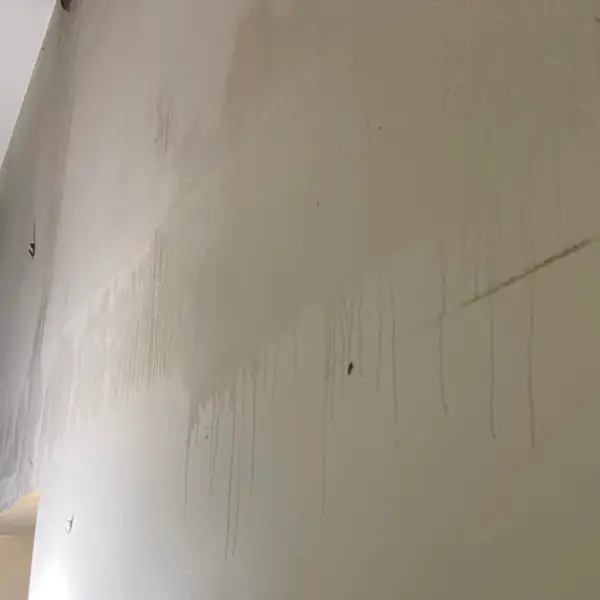
If you are having trouble with damp we have a full range of guides on addressing these frustrating issues.
Causes of cold walls in old houses
There are a number of different factors that can lead to cold walls. We will now go through each one to provide you with a checklist of areas to inspect within your home
- Insufficient Insulation: One of the main causes of cold walls in old houses is insufficient insulation. Older homes were often built without adequate insulation in the walls, floors, and ceilings, which leads to heat loss and cold walls.
- Old Construction Methods – If your home pre-dates 1920, it is likely it will likely have been built with a single masonry wall. This means the whole wall is exposed to the elements, making it more difficult to heat and keep warm. Modern houses are better equipped to fight against this issue thanks to the cavity wall construction method.
- Draughty Windows and Doors: Another common cause of cold walls is drafts coming through gaps or poorly sealed areas of the windows and doors. This cold air can lower the overall temperature of the room and exacerbate the walls feeling cold to the touch.
- Lack of Heating: A lack of heating can also contribute to cold walls. If a home does not have a reliable heating source, it can be difficult to maintain a comfortable temperature, especially in colder months.
- Unsealed Air Vents and Chimneys: Unsealed air vents and chimneys can also cause cold walls. When these areas are not properly sealed, cold air can enter the home and lower the overall temperature, making the walls feel colder.
Often houses will have a mixture of problems which lead to issues with cold walls in old houses. It’s important to go through each area to get a proper assessment of the issues that you are facing in your home.
Small fixes can help to improve both the comfort and energy efficiency of the home.
Solutions for cold walls in old house
Thankfully, even if you do have a problem with cold walls there are a number of steps that can be taken to help.
- Improving Insulation: One solution for cold walls is to improve insulation in the home. This can be done by adding insulation to the walls, floors, and ceilings, or by upgrading existing insulation to a more effective type.
- Upgrading Windows and Doors: Another solution is to switch to new windows and doors. Replacing old, single-paned windows with double-paned, energy-efficient windows can reduce heat loss and prevent cold air from entering the home. Installing weather stripping and door sweeps can also help to reduce air leaks and is an easy quick fix.
- Installing Heating Systems: Installing a reliable heating system can also help to address cold walls. This can include central heating, radiant heating, or a combination of the two. A well-functioning heating system can help to maintain a comfortable temperature in the home, even during the coldest months. Modern boilers although expensive to install often run much more efficiently and can help heat your home and walls.
- Blocking Old Chimneys: By blocking off an old chimney in the room it will reduce the amount of warm air that escapes up the chimney. When blocking off a chimney it’s best to ensure you have air bricks in place and a vent in the chimney to ensure airflow through the house. This is especially true in older homes which require good ventilation, for more information see our guide on airbricks in old houses.
- Temperature: Opt for a consistent amount of heat throughout the day but at a lower temperature. Modern boilers are built to run efficiently at lower temperatures and it avoids your system having to work hard to get up to higher levels.
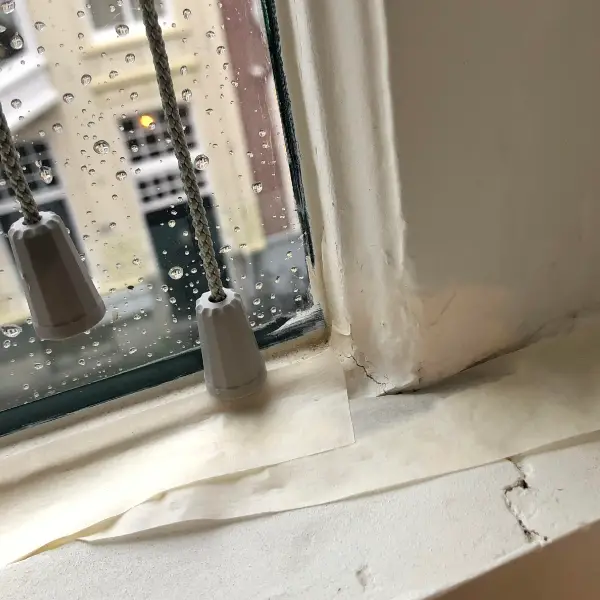
This Kinda Old House Top Tip
If you are running a log burner in your home, opt for a stove fan that sits on the top. This will help circulate the heat better warming more of your home.
Each of these solutions can help to address the issue of cold walls in old houses. By taking a comprehensive approach and addressing multiple issues, homeowners can achieve the best results and improve the overall comfort and energy efficiency of their homes.
DIY solutions vs. professional solutions
There are a number of small DIY solutions that homeowners can take to address their issues with cold walls. Many of these solutions are relatively low-cost and simple. For example, improving insulation and sealing air vents, can be relatively simple and inexpensive to complete. However, if you have a larger problem with cold walls they may not be enough to properly keep your home warm and dry.
At this stage professional solutions, such as installing new windows and doors, upgrading heating systems, and improving insulation, can be more effective in addressing cold walls.
These solutions are completed by trained professionals, who have the knowledge and expertise to properly diagnose the issue and implement the most effective solution.
Although professional solutions are typically more expensive than DIY solutions, they can provide long-term benefits and peace of mind.
Cold walls in old house – Our recommendations
For homeowners looking to address the issue of cold walls in their old houses, it is recommended to first go through the smaller tweaks that can be done independently.
If these have not helped the issue it might be time to call in the professionals.
Cold walls can often lead people to believe they have issues with rising damp, especially in old houses. Please read our full guide on rising damp in old houses for further tips and a full checklist.
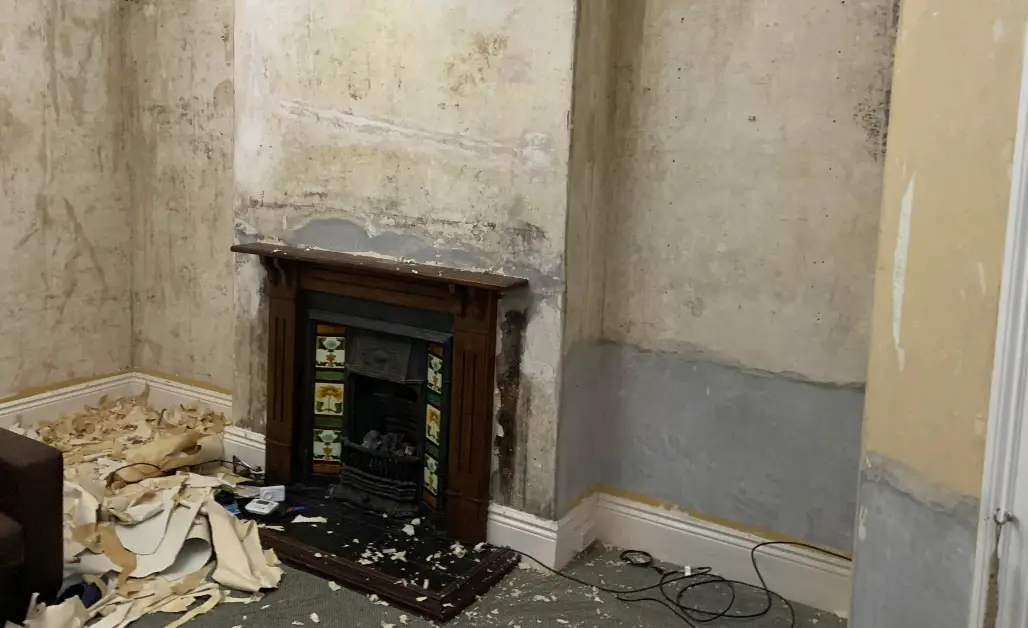

Leave a Reply